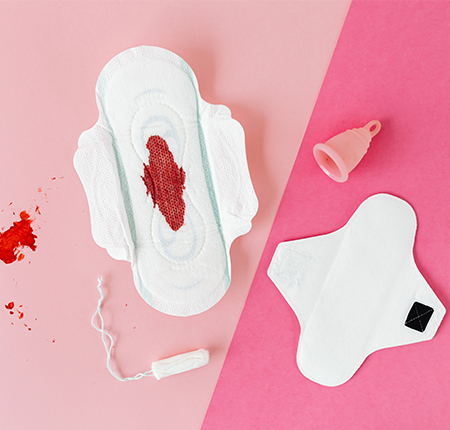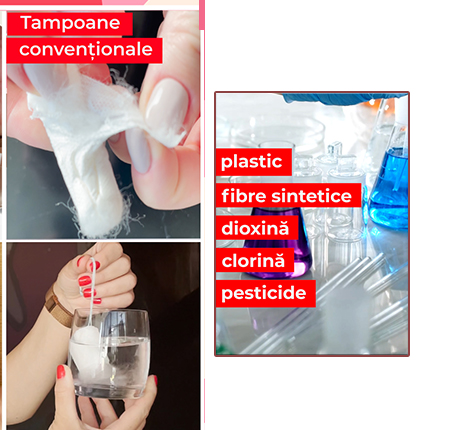
What is Toxic Shock Syndrome (TSS)?
Toxic shock syndrome is a condition caused by toxins produced by Staphylococcus aureus bacteria, or by toxins produced by group A streptococcal bacteria. 30% of people have Staphylococcus aureus on their skin or inside their nose, and if you're in a female body, approximately 10-20% of us carry Staphylococcus aureus in the vaginal mucosa.
"50% of TSS cases involve people who use tampons during menstruation"
Although associated with menstrual tampon use, Toxic Shock Syndrome can affect anyone of any age and gender. Symptoms appear suddenly and evolve quickly: when diagnosed, it must be treated immediately because it is a serious condition that can be life-threatening.
People who use tampons during menstruation are more likely to develop this syndrome, and although the mechanisms are not fully understood they may be related to the presence of highly toxic ingredients that act as hormone disruptors.

When you are at risk of developing SST
Risk factors occur when bacteria enter the body through wounds or skin lesions, surgery, use of tampons or other internal menstrual devices (menstrual cups, contraceptive sponges, diaphragms).
Possible causes of SST:
Internal tampons (which, if not changed within 4-6 hours of insertion into the vagina, allow bacteria to grow)
Menstrual cup
Intravaginal contraceptive methods - diaphragm
Skin injuries, insect or animal bites and surgical injuries
Using tampons for nosebleeds
The birth
Streptococcus or staphylococcus infections
What are the symptoms of Toxic Shock Syndrome?
The symptoms of toxic shock syndrome start suddenly, develop and worsen quickly, and the signs you can recognize them by are:
High temperature with chills, coming on suddenly
Headache
Sudden feeling of exhaustion for no apparent reason (physical or emotional exertion)
Low blood pressure
Vomiting, diarrhea
Virosis symptoms: sore throat
Sunburn-like rash on palms and soles
Bright color of the tongue, lips, injected eyes
Muscle pain
seizures
Dizziness or fainting
Breathing difficulties
Is Toxic Shock Syndrome Treated?
Since it is bacteria, treatment includes antibiotics and specific medications to treat symptoms (analgesics, antihypertensives, oxygen, hydration, and electrolytes by infusion). Depending on the severity of the case, doctors determine the treatment and methods - which can also be surgical (removal of tissues affected by bacteria).

What can you do to protect yourself?
Compliance with intimate and body hygiene rules, treating injuries and infections in time. And if you use tampons as a period protection method make sure you use only organic products and change them every 4 hours!
Did you know that a conventional tampon is made of plastic and synthetic fibers that detach from the tampon and can cause sores that allow bacteria to produce the toxins that cause STDs.

Only 100% organic cotton tampons will leave no residue in your body. However, the same rule of their behavior will be observed.
And when it comes to menstrual care, doctors recommend alternating types of products, using organic products that contain as few (or no) toxic ingredients as possible, changing tampons every 4-8 hours and using the right products for each flow.
Can toxic shock syndrome recur? What are the odds?
Unfortunately, yes. Studies have shown that approximately 30% of patients will have at least one more episode of toxic shock syndrome after the first, and the risk of recurrence is higher in the first 3 menstrual cycles, especially if the initial infection was not cured with appropriate antibiotics .
As for antibodies, recent studies also demonstrate that approximately 66% of patients do not develop antibodies after menstrual toxic shock syndrome, thus still being vulnerable to bacterial toxins. However, the risk can be reduced by avoiding long-term use of internal tampons or diaphragms.
If you have questions that we didn't answer in this article, write to us!






















